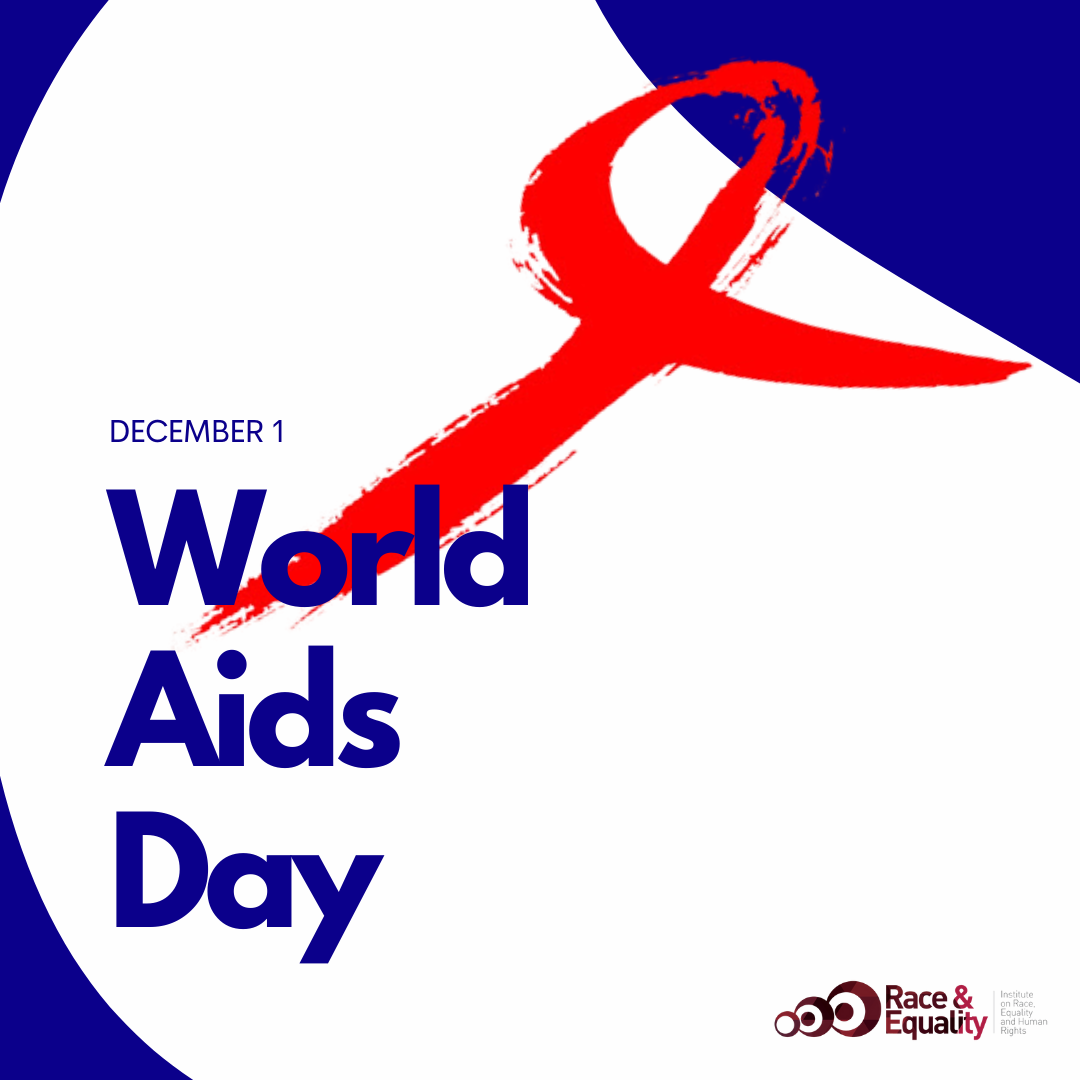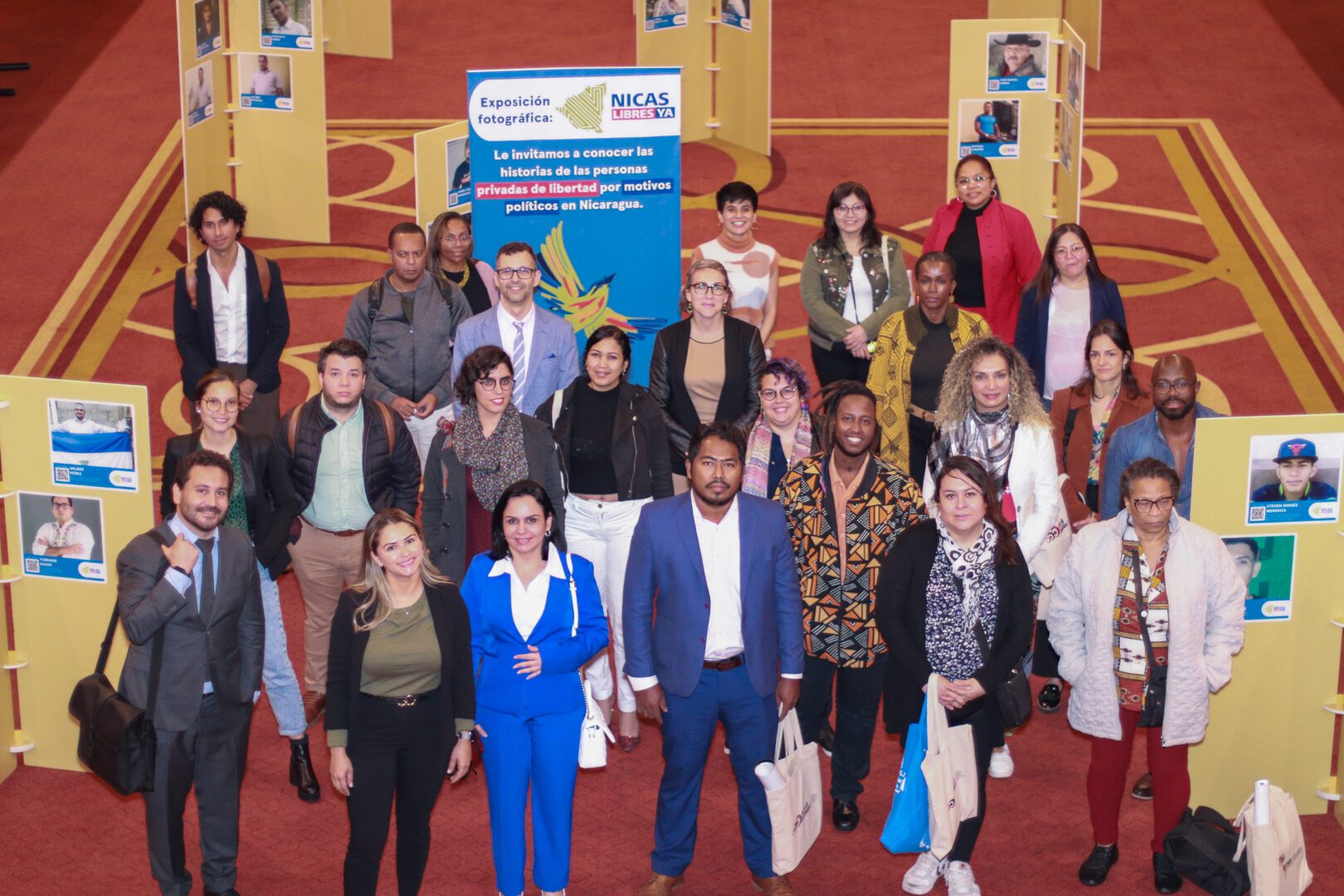World AIDS Day: Race and Equality calls for Brazil and Colombia to guarantee equality in HIV treatment
This December 1, the International Institute on Race, Equality and Human Rights (Race and Equality) honors and stands in solidarity with all people living with HIV on World AIDS Day. […]

This December 1, the International Institute on Race, Equality and Human Rights (Race and Equality) honors and stands in solidarity with all people living with HIV on World AIDS Day. Established by the World Health Organization (WHO) in October 1987, with support from the United Nations (UN), the date aims to raise awareness and promote dialogue on sexual rights in an inclusive and responsive way for HIV prevention. In addition, this date aims to break stigmas about the reality of people living with the virus, being a day of visibility and solidarity.
Brazil: Structural racism and LGBTIphobia as barriers in the treatment of AIDS
In Brazil, throughout the month of December, the “Red December” awareness campaign is celebrated, symbolized by a red ribbon that, globally, represents solidarity and commitment in the fight against AIDS. However, the country, that was once a world reference for the treatment of AIDS, currently faces a dismantling of the Unified Health System (SUS) accompanied by setbacks in public policies such as governmental decrees that have demoted departments dealing with the monitoring and prevention of sexually transmitted diseases, under which HIV is considered.
In its chapter on the right to health, the report “What is the color of the Invisible? The human rights situation of the Afro-LGBTI population in Brazil”, published by Race and Equality, provides data that explains the worrisome advancement of HIV / AIDS in the country [1]. As the document points out, structural racism and LGBTIphobia combined with the advancement of religious conservatism, constitute obstacles to the equal treatment of HIV for the entire population. The State’s lack of responsibility in the face of a moralistic discourse, incites society to prejudiced and LGBTIphobic practices when facing the fallacy that HIV is a virus that only infects homosexual people. As a result, any discussion on sex education was eliminated from schools.
According to the report, between 2007 and 2017, there was a 700% increase in HIV infection rates among people ages 15 to 24. This data is from the previous government, but it is known that due to the advancement of religious conservatism, currently, there are explosions of HIV cases among young people and adolescents who have not had access to the necessary public health information. Additionally, the report shows the impact of racism on healthcare and treatment, evidenced by the large discrepancy in relation to race and sex in the increase in cases of HIV infection and the development of AIDS, between 2008 and 2018.
Epidemiological data, explained by the report, shows that for both men and women, while the number of deaths from AIDS has decreased among white people, it has increased considerably among Black people. In 2018, there were 2,885 (40.3%) deaths of white men and 4,219 (59%) deaths of Black men. For women, the same differences occur. In 2008, there were 1,804 (47.4%) deaths of white women and 1,981 (52.1%) deaths of Black women. In 2018, there were 1,309 (37.7%) deaths of white women and 2,136 (61.5%) deaths of Black women.
The document criticizes the invisibility of lesbian women, transgender women, travestis and trans men in the data provided in the epidemiological bulletin. Placed within patterns of universal cis-heteronormativity, consequently, these groups no longer have public health policies that understand their real needs and, once again, are erased from the discussion and left more vulnerable.
The report reveals that, “A meta-analysis carried out based on data from 15 countries [2], estimated that 33.1% of trans women in Brazil lived with HIV, only behind Argentina (33.5%) and India (43.7% ), according to the data recorded up until 2011. That same survey pointed to the alarming estimate that trans women were 49 times more likely to contract HIV than other people.”
In this sense, the report brings to light the impact caused by structural racism and LGBTIphobia, condemning a large part of the Brazilian population to situations of extreme vulnerability in care and treatment for a dignified health condition. With this, the advancement of HIV / AIDS in Brazil again puts the country at risk of a pandemic, seeing as the dismantling of social programs essential for the maintenance of the population’s health serve as grounds for the proliferation not only of diseases, but also inequality and intolerance.
HIV/AIDS in Colombia: a success story without victories
The annual global report from the Joint United Nations Programme on HIV / AIDS (UNAIDS), published in 2020 [3], reveals that Colombia is one of the few countries in Latin America where the rate of HIV infections has decreased in the last decade. Despite this, the general figures hide the lack of progress in serving the most vulnerable groups, seeing as high mortality rates still persist. However, there are other structural barriers that prevent these populations from accessing programs already proposed by the Government under this global strategy.
First, there is an important gap in access to health services due to the high rates of informal work and unemployment in the country which limit the possibilities of accessing services for the diagnosis of the disease, specifically for early diagnosis allowing for timely action and treatment. Today, the epidemic is concentrated in specific groups, two of which belong to the LGBTI population: “men who have sex with men”, MSM (this category includes bisexual men and men who do not declare themselves “gay”), and “trans women ”, MT (trans people who are born men and are now women). Within these groups, seropositivity levels are found to be highly elevated.
In Bogotá, the contagion rates in 2018 were around 17% (MSM) and 20% (MT). In contrast, the prevalence for the rest of the population in Bogotá is 0.5%, for those between the ages of 15 and 49 [4]. According to the Ministry of Health, at the national level, men who have sex with people of the same sex have a prevalence of HIV infection of 20.4% and transsexual women of 23.4% [5]. Despite these figures, there are no specific programs that allow these groups to access rapid tests or relevant information on them.
The second major barrier is the discrimination and prejudice that still exists around the subject. The stigma represented by HIV involves disrespectful and unnecessary inquiries about people’s sexual identity, their performance as a sex worker or about drug use. This is especially shocking if we take into account that in the main cities of Colombia, cases of contagion increased in trans women by more than 15% in 2019, among whom sex work continued to be one of the most common sources of income [6 ]. There is a negative burden associated with the disease that sends a message of death and / or undesirability to society about people living with HIV.
Just last year, the Colombian Constitutional Court eliminated the section of the penal code that criminalizes HIV transmission, noting that the law violated principles of equality and non-discrimination, considering that it discriminated against people living with the virus, stigmatizing it and limiting their rights [7]. As long as there are little to no specific programs for these populations on how to access healthcare and that work toward eliminating prejudices about the disease in general, it is clear that the fear of undergoing medical treatment and of society’s response will prevail over the search for a diagnosis.
Finally, returning to the idea that the Colombian government needs to strengthen its preventive response, it is important to understand that the phenomenon of HIV / AIDS presents itself as a serious global public health issue, in which we must not only discuss the natural context of the disease, but also a process that involves several dimensions, such as the social, economic and cultural ones.
The context of the COVID-19 pandemic has exacerbated these difficulties. Although UNAIDS recommended that all countries distribute antiretrovirals to patients for periods of three months rather than monthly, in order to prevent them from excess exposure to COVID-19 from frequent outings, Colombia did not accept this provision [8]. This decision, in addition to the difficult socioeconomic conditions that already affect the LGBTI population, currently limits the access to health services by LGBTI persons [9].
On this day, Race and Equality calls upon States throughout Latin America to guarantee racial and sexual equality in the treatment of HIV, in addition to reinforcing the urgent need for sex education campaigns, whether in school environments or in public spaces. It is necessary to break stigmas and strengthen HIV prevention so that the world is not hit by another pandemic that, as is known, can be controlled. With this, we urge States to adopt the following recommendations:
1- Carry out the recommendations of the IACHR contained in its report on Violence against LGBTI people (2015) and adopt comprehensive measures that effectively combat discrimination and violence faced by LGBTI people living in poverty and extreme poverty; [10]
2- That guidelines be developed so that medical and nursing schools address – in their curricula, research, extension groups and in their academic events – topics such as sexual orientation and gender identity, so that, from their education, health professionals better understand the specific needs of LGBTI people, in particular transgender people.
3- That measures of awareness and training of professionals working in the health area be adopted, ensuring equal treatment for LGBTI people.
[1] Report available at: http://oldrace.wp/es/es_publicaciones/
[2] Argentina, Australia, Brazil, El Salvador, Spain, United States, Netherlands, India, Indonesia, Italy, Peru, Pakistan, Thailand, Uruguay and Vietnam.
[3] Available at: https://www.unaids.org/sites/default/files/media_asset/ 2020_global-aids-report_en.pdf
[4] Available at: https://www.revistaarcadia.com/periodismo-cultural—revista-arcadia/articulo/ lgbt-political-and-the-challenge-confront-hivsida-in-colombia / 68263 /
[5] Available at: https://www.radionacional.co/noticias/comunidad-lgbti-coronavirus
[6] Available at: http://unradio.unal.edu.co/nc/detalle/cat/un-analisis/article/vih-en-america- latina.html
[7] Available at: https://www.corteconstitucional.gov.co/relatoria/2019/C-248-19.htm
[8] Available at: https://www.unaids.org/sites/default/files/country/documents/COL_2020_countryreport.pdf
[9] Available at: https://www.radionacional.co/noticias/comunidad-lgbti-coronavirus
[10] IACHR. Violence against LGBTI Persons. 2015, p. 227, par. 382. Available at: http://www.oas.org/en/iachr/reports/pdfs/ViolenceLGBTIPersons.pdf

